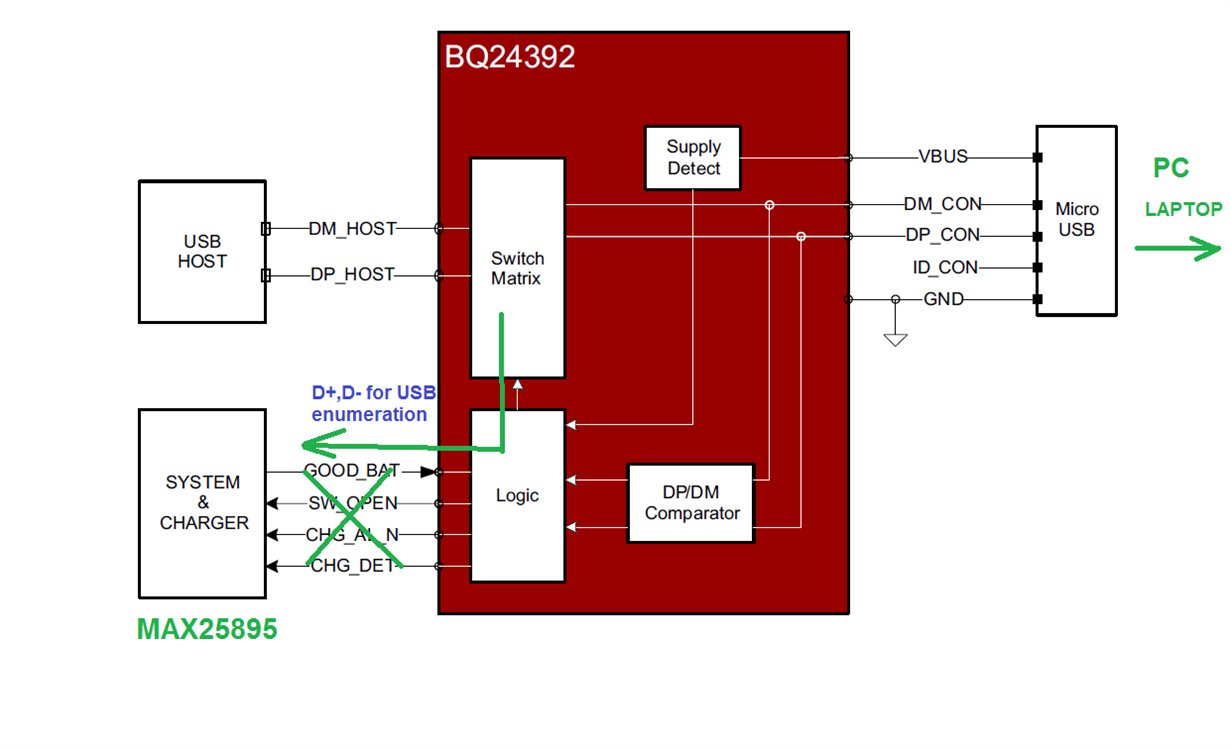Dear all,
we would like to build a fully autonomous single cell Li-Ion charger w/ USB enumeration (support for SDP, CDP, DCP, BC1.2 compliant) with fuel gauge measurement.
But the trick is that the battery pack should be fully autonomous from the host system, meaning charger should evaluate the USB source, set the proper charging current and then leave the USB data line for communication with the host (so not to interfere with USB line). All this should be done without a use of MCU (if possible). Solution will be used in 2 design:
-
As a battery pack for mass storage device (build in acupack)
-
As an external auxiliary power source = rugged USB power bank with fuel gauge (for external power)
So therefore as you can see, in 2nd case, we will not have a MCU available so it should be autonomous.
The block diagram for the ACUPACK should look like this:
Expected parameter of the system:
Main features:
-
Fully autonomous Single Cell Li+ ACUPACK w/ on-board charger, step-up, protection and fuel gauge data w/ I2C output
-
Capable to charge and power up the host at the same time
-
Capable to pass USB data to the host (for mass storage device)
-
Quick charging (up to 2hrs)
Input:
-
Single input only – 4 pin connector w/ USB data lines (ESD protected)
-
5V from USB only (but with min 15V OVP protection)
-
Automatic USB type or and adapter detection (support of SDP, CDP a DCP) + USB enumeration
-
Support for all charging currents: 100mA, 500mA and 2.5A (full possible current)
Output:
-
5V / 2A continuous
-
2.5A peak (if needed)
-
Protected against short-circuit
Communication / data:
-
I2C™ / HDQ Interface Formats for Communication with Host System (Fuel Gauge)
-
USB data pass from IN connector to the host
-
1 pin for CHARGING OK/pre-CHARGING
-
1pin for POWER GOOD/system status?
Protection of battery (cell):
-
Hardware-based Safety and Protection:
-
Overvoltage (OVP)
-
Undervoltage (UVP)
-
Overcurrent in Charge (OCC)
-
Overcurrent in Discharge (OCD)
-
Short-Circuit in Discharge (SCD)
-
2 major questions we have:
1) How to evaluate USB without interfere w/ USB data line/data (w/ no MCU present)
2) Do I need USB switch? (again, do I need to put MCU to the board or can it be w/ no MCU present)?
Can you recommend a TI charger that would fit our design?
Thank you in advance.
With kind regards,
Daniel



